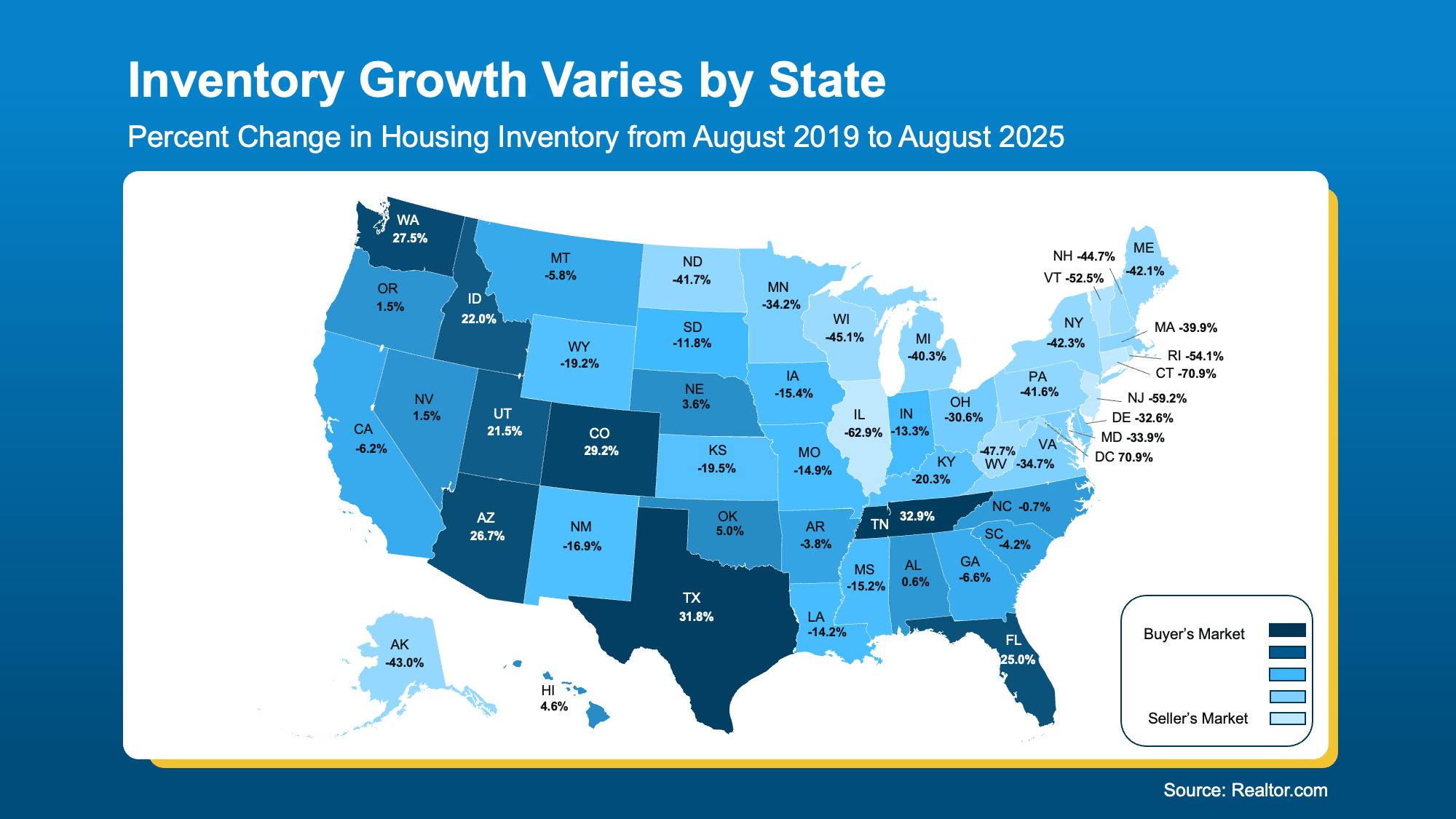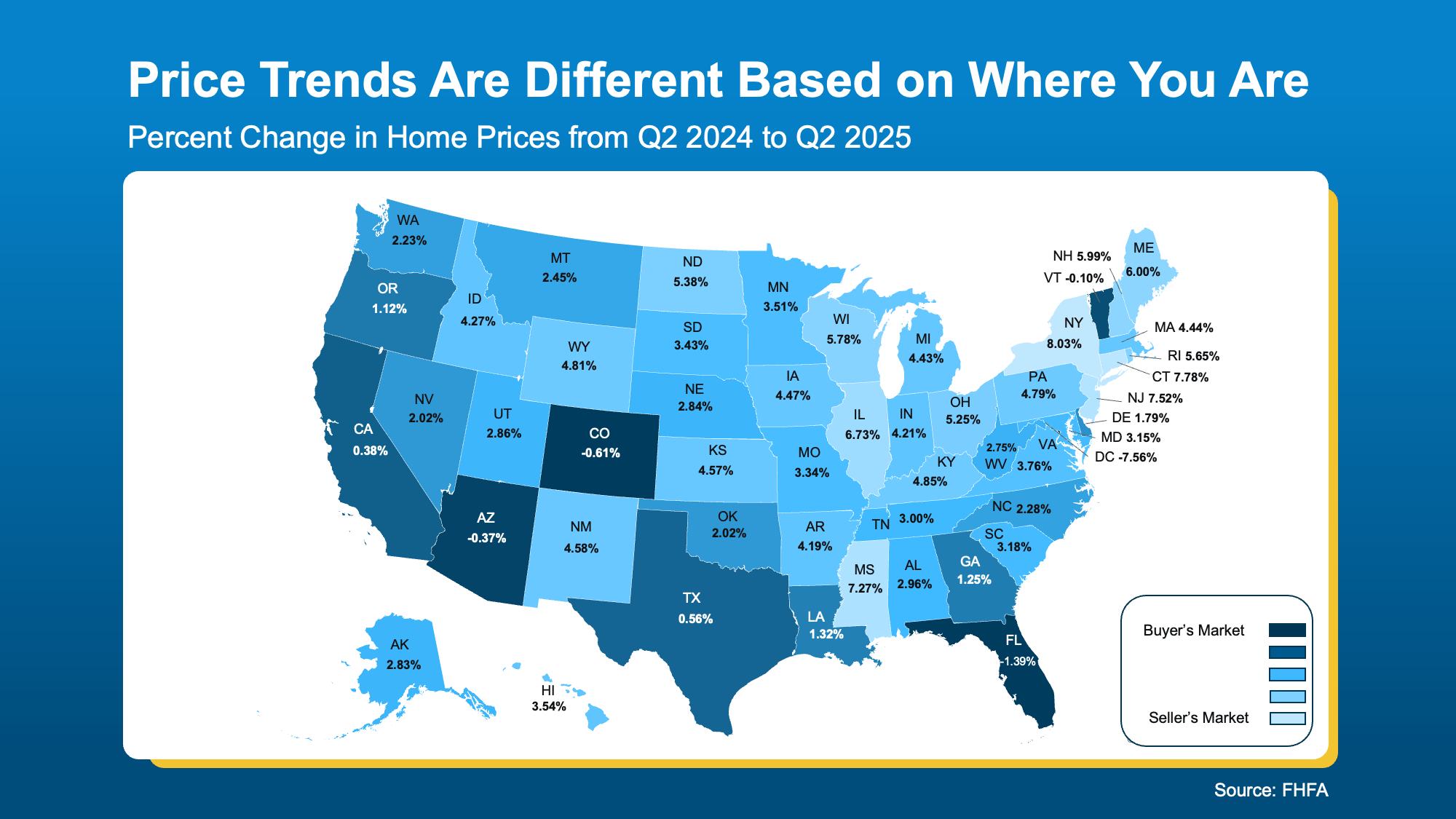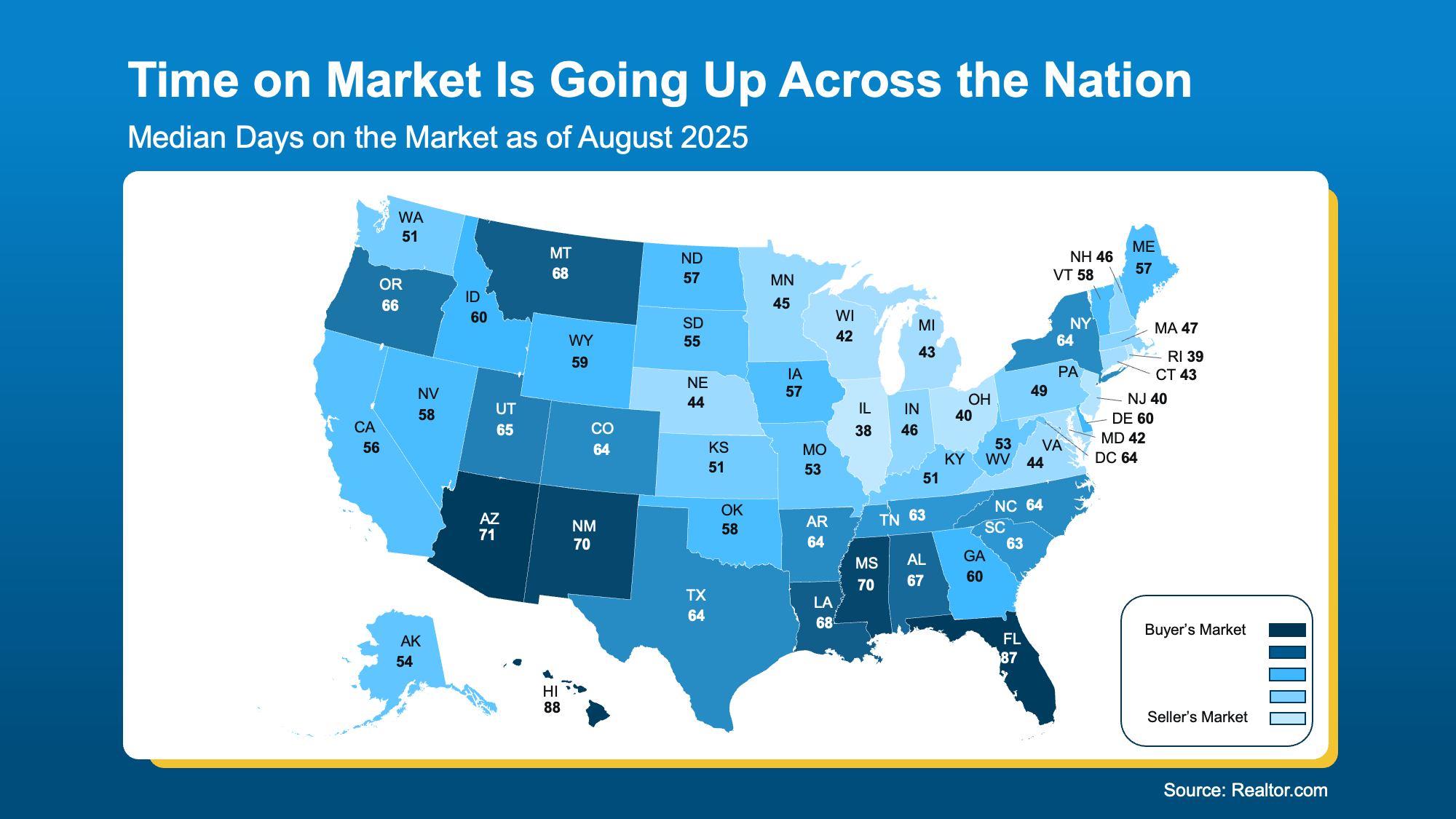Why Seattle Buyers and Sellers Face Very Different Conditions Today
September 26, 2025
The U.S. housing market is divided right now. In some states, homebuyers are gaining negotiating power, while in others, sellers still control the market. Real estate trends vary widely by location, so whether you’re buying or selling a home depends on what’s happening in your state. Wondering if it’s a buyer’s market or a seller’s market where you live?
These 3 maps show how the split is playing out across the country. In each one:
- Darker Shades of Blue = Buyer friendly
- Lighter Shades of Blue = Seller strong
Inventory Sets the Stage
Housing inventory is increasing nationwide, but the number of homes for sale looks very different depending on your location. In some markets, buyers benefit from more listings and stronger negotiating power, while in others, low inventory still gives sellers the advantage. These real estate market trends are shaping who has the leverage in today’s housing market.
This map uses data from Realtor.com to break it down:
- The darker shades of blue show where inventory has risen more than in other areas of the country. Buyers here have more to choose from and should have an easier time finding a home and leveraging their negotiating power.
- The lighter shades of blue are where inventory is still low. Sellers are more likely to sell quickly and make fewer concessions.
 Prices Follow Inventory
Prices Follow Inventory
The second map tracks how home prices are shifting by state. Just like above, you can see the divide taking shape. Many of the same areas are darker blue. That’s because there’s such a close tie between inventory and prices. When inventory rises, prices moderate.
- The darker shades of blue are where prices are actually coming down slightly or flattening. Because, with more homes for sale, sellers may have to cut their price or throw in concessions to get a deal done. And that benefits budget-conscious buyers.
- The lighter shades of blue show areas where prices are still climbing because inventory is low. Sellers may still see buyers competing for homes, and that pushes prices higher.
 Time on Market Tells the Same Story
Time on Market Tells the Same Story
Here’s a look at how fast homes are selling across the U.S., broken down state by state. Housing market data shows clear regional patterns, with many states in the southern half of the country seeing longer days on market. Understanding how quickly homes sell in your state is key to knowing whether it’s a buyer’s market or a seller’s market right now.
Generally speaking, as inventory grows, homes don’t sell as quickly. That’s why some of the same areas that have more inventory, see homes take more time to sell.
- The darker blues show where homes are staying on the market longer. That gives buyers more time and options, and signals sellers may need to adjust their expectations.
- The lighter blues are where homes are still moving quickly. Sellers there may feel more confident, and buyers may need to act fast.
 This explains why some sellers in these darker blue states are feeling frustrated when their listings linger, while others in tighter markets (like the lighter blue states) are still seeing their homes sell quickly.
This explains why some sellers in these darker blue states are feeling frustrated when their listings linger, while others in tighter markets (like the lighter blue states) are still seeing their homes sell quickly.
Why an Agent’s Local Expertise Is the Key To Unlocking Today’s Market
The U.S. housing market is currently divided, with conditions varying widely depending on your location, whether you’re buying or selling, and where you plan to move. While state-level housing market trends provide a general overview, local market insights are what really matter. Only a knowledgeable local real estate agent can give you the neighborhood-specific information you need to make smart buying or selling decisions.
Bottom Line
Want to know what conditions look like in your neighborhood?
Want to know if it’s a buyer’s market or a seller’s market in your area? Let’s connect to review the latest housing market data and local real estate trends, so you can make informed decisions for your next home purchase or sale.




